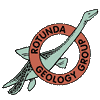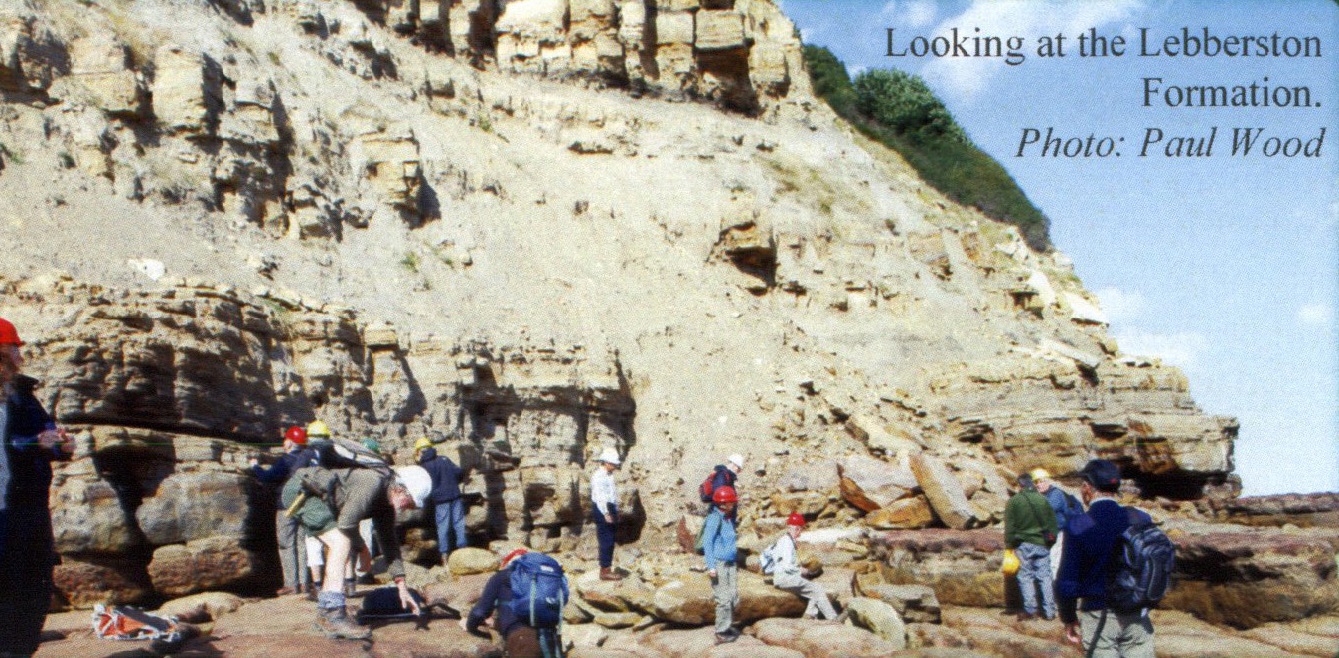7 September 2013 - Leader: Steve Livera
The party descended to the shore at Cloughton Wyke where the Gristhorpe Member of the Cloughton Formation is splendidly exposed in the cliffs. Steve pointed out sandstone bodies of uniform thickness and medium grain size. These sandstones were planar bedded with the top 10cm ripple cross bedded and their bases displayed gutter casts. He explained that such sandstone bodies extend 6-8 km inland north to Ravenscar.
They were formed by an initial high velocity current bringing in a sudden influx of sediment which was deposited as the current waned and represent crevasse splay deposits. Below the sandstone was a sequence of coarsening up black muds with lenticular silt laminae and pyrite and siderite nodules which may have been have been deposited in a tidal environment. Below this was a pale coloured mudstone with plant roots deposited slowly on a land surface.
We then traversed north over the barnacle-covered rocks of the foreshore and down stratigraphically to the Lebberston Formation. This is formed of a massive sandy limestone with the bryozoan Haploecia, crinoid stem ossicles, and shell fragments including Arca type bivalves. The sandy limestone is capped by irregular blocks of ironstained beach rock and is overlain by tidal muds and sands, partly wave-worked.
A variety of trace fossils were found in blocks of Scarborough Formation fallen from the cliff above.
After lunch we visited Hayburn Wyke where a recent cliff fall had cleaned up a section through a channel sandstone with small scale dune bedding showing a palaeocurrent flow to the SE. Below on the foreshore point bar deposits were exposed and also some minor folding.



